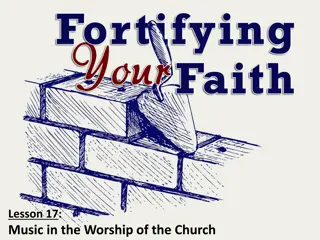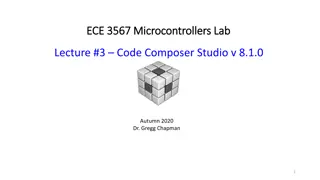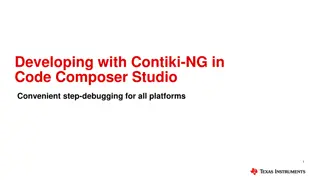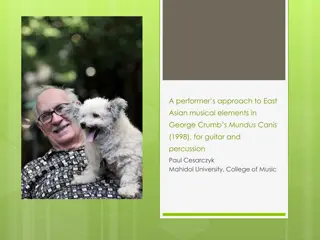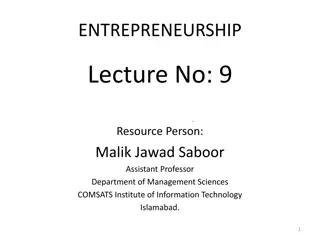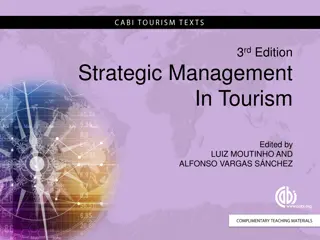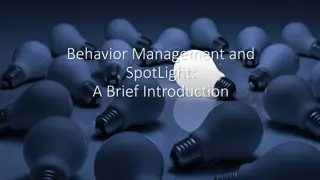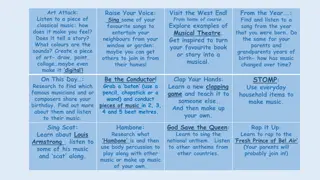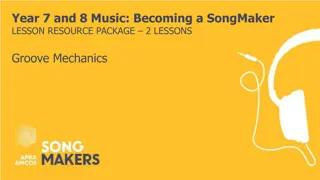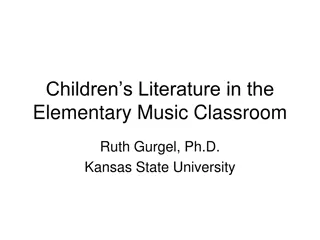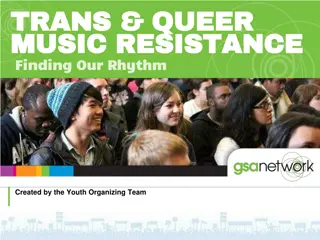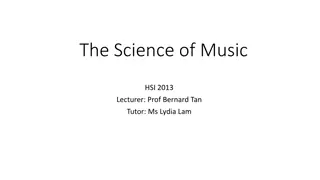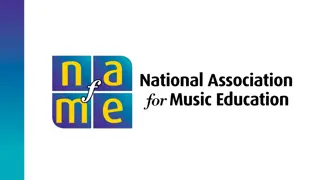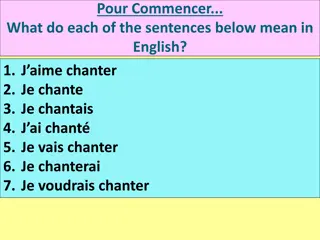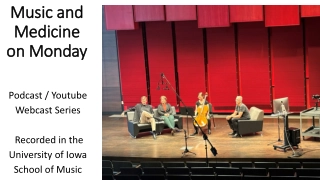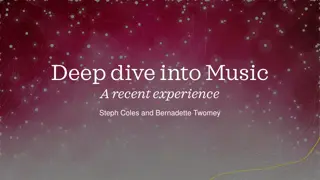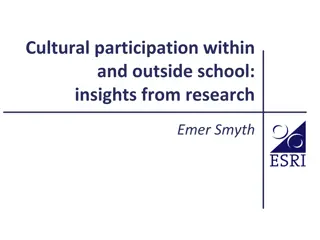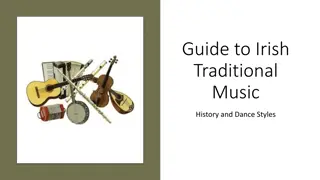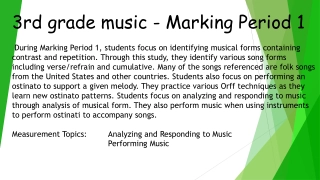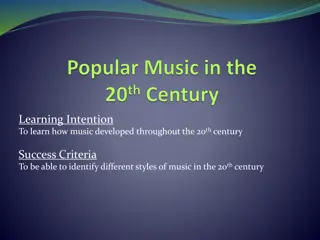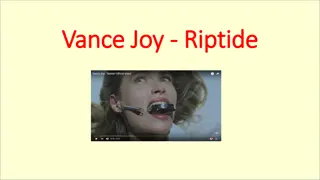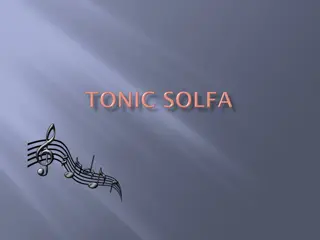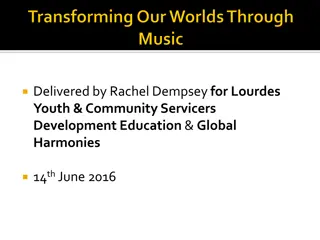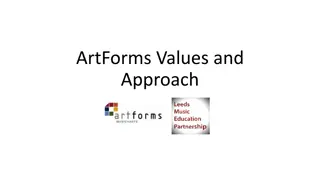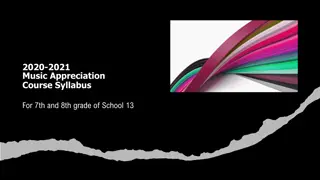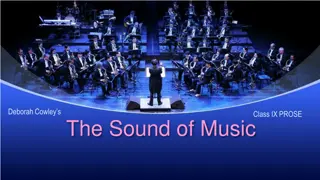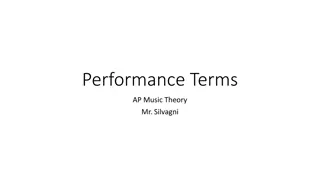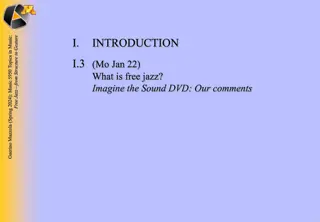Composer Spotlight: Jennifer Higdon - Music and Creativity
Jennifer Higdon, a renowned composer known for her contemporary orchestral music, overcame a late start to become a major figure in the music world. From winning prestigious awards to teaching young musicians, her contributions are significant. Explore her life, achievements, featured work "City Scape: Peachtree Street," and the fundamental of music focusing on rhythm. Engage in a classroom activity related to creating rhythm compositions. Dive into the world of music and creativity through Jennifer Higdon's story.
Download Presentation

Please find below an Image/Link to download the presentation.
The content on the website is provided AS IS for your information and personal use only. It may not be sold, licensed, or shared on other websites without obtaining consent from the author. Download presentation by click this link. If you encounter any issues during the download, it is possible that the publisher has removed the file from their server.
E N D
Presentation Transcript
Jennifer Higdon Born: December 31, 1962
Biography Jennifer Higdon was 15 years old when she taught herself to play the flute and 18 years old when she began formal music studies She began studying composition at age 21 and despite this late start has become a major composer of contemporary orchestral music She has written orchestral music, chamber music, wind ensemble, choral, and opera music In 2010, Higdon was awarded the Grammy for Best Classical Contemporary Composition for her Percussion Concerto and the Pulitzer Prize for Music for her Violin Concerto She received a bachelor s degree in Music from Bowling Green State University, an Artist Diploma from the Curtis Institute of Music, and a master s degree and doctorate from the University of Pennsylvania. She holds the Milton L. Rock Chair in Composition Studies at the Curtis Institute of Music in Philadelphia, where she teaches young composers and musicians.
Featured Work: City Scape: Peachtree Street-not included on CD City Scape is a composition by Jennifer Higdon, commissioned by the Atlanta Symphony Orchestra in 2002. It is made up of three movements: Skyline, River Sings a Song to Trees, and Peachtree Street, which can be played separately or together as the conductor decides. Peachtree Street is the main street in downtown Atlanta and this piece represents the excitement of a city street. City Scape is a metropolitan sound picture written in orchestral tones Every main street that runs through a city is loaded with the energy and bustle of commerce, reflecting the needs and wants of its citizens through business. Because there is so much diversity in city streets, I ve created a movement that explores the diverse sections of the orchestra, their relationships and the way they combine in creating a larger voice Jennifer Higdon
Fundamental of Music: Rhythm Rhythm is the arrangement of sounds in an organized manner. Rhythm occurs throughout our life. Imagine the following pattern of sounds: Rain falling on a window Ticking of the second hand of an analog clock Your feet hitting the ground as you walk Meter helps organize the rhythms for notation. It also helps give the musical work its pulse. Throughout this piece, Higdon plays with various rhythms to affect where the ear hears the pulse
Classroom Activity #1-Objective: Students will create their own rhythm composition using unpitched instruments Watch this short video (I need the video) Have students turn and talk to their shoulder buddies about different rhythms As a class create a rhythm composition from these ideas Students will then break into pairs and create and write out a short rhythm composition using at least 4 different rhythm patterns. Once completed, students will share these rhythm patterns with the class
Classroom Activity # 2: Rhythm Game Post on projector or Smart Board reminders of notation-whole, half, quarter, eighth notes add in (Higdon Link: Notation chart) Distribute markers and paper Direct students to create their own rhythmic piece which they will perform for their classmates Clap an example and as a student volunteer to write on the board what you clapped. Repeat several times to reinforce different rhythms, so that the students build confidence in various rhythms Allow a few minutes for students to create their own rhythmic compositions and have each succeeding student guess how to notate the previous student s composition


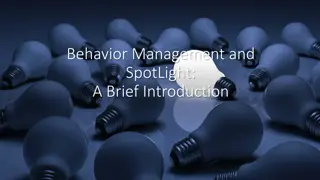
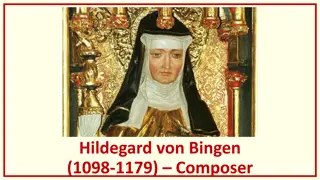
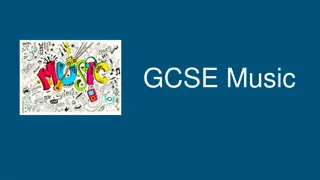
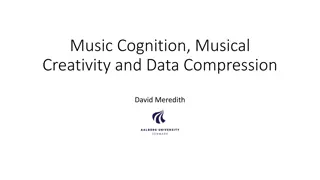
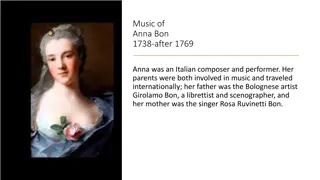
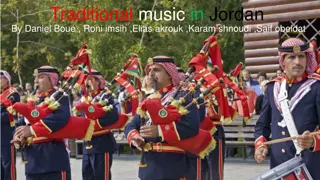
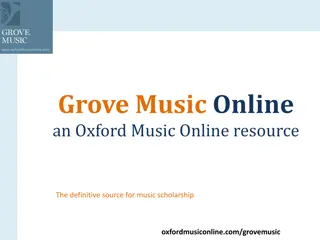
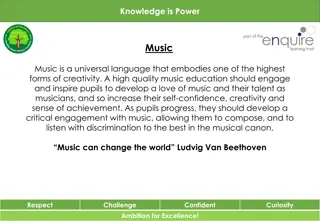
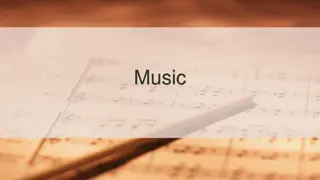
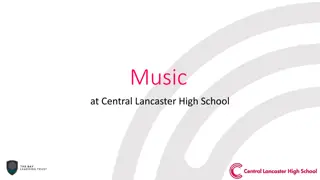
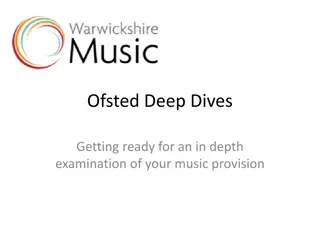
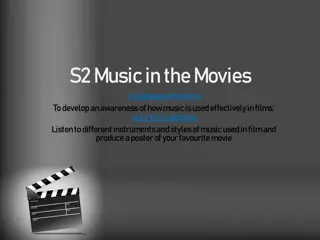
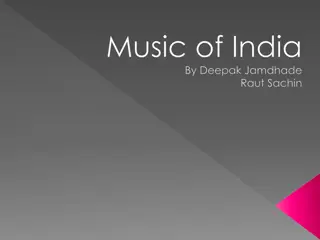
![Explore the Exciting World of Live Music Through [Insert Town/City] Census!](/thumb/148894/explore-the-exciting-world-of-live-music-through-insert-town-city-census.jpg)
